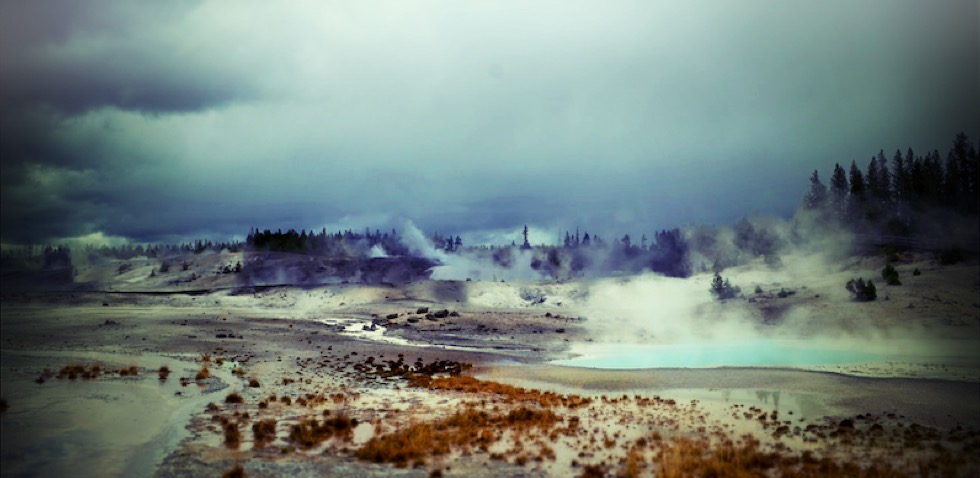Humidity is one of three atmospheric conditions that effects a bullet during flight. Most shooters recognise the fact that humidity needs to be accounted for, but not many are aware of the impact deflection that actually takes place. So let’s start off today’s article by answering: how much of an effect does humidity actually have on a bullet during flight?
The effects of humidity on bullet flight are slight, at least when compared to temperature and atmospheric pressure. While humidity should always be accounted for during long range shooting, the trajectory shift (even during drastic humidity changes) is often minor; in most cases less than a scope’s adjustment capability.
Humidity can be defined as the concentration of water vapour present in the air, and is measured in a percentage format from 1% to 100%. While pressure and temperature are far more influential when shooting over long distances, humidity does still come into play and should be accounted for. This will ensure the most precise and accurate shooting. If neglected, accuracy may be lost, but a hit on target is still likely, so long as all other environmental factors have been accounted for correctly.
How Does Humidity Affect Bullet Flight?
Contrary to common belief, higher humidity results in thinner air. When we speak of relative humidity, we are talking about the amount of water vapour present in the air, and despite how it feels to walk into an area of high humidity (the air feels thicker), the air is actually less dense. Humidity therefore has the opposite ballistic effect to what most would imagine. Instead, a bullet travels easier through humid air.
Water vapour is the gaseous state of water, and is generally invisible to the human eye. Water vapour molecules are lighter than the molecules of nitrogen and oxygen that make up approximately 99% of the atmosphere.
- A higher humidity therefore results in thinner air and a faster travelling projectile, producing a high impact on target when no compensation is made.
- A lower humidity produces thicker air and slows the projectile down, producing a low impact on target when unaccounted for.
With all this being said, the impact that humidity has on a projectile during flight is often negligible, unless you are shooting in a different environment over long distances and with contrasting humidity levels.
Does Humidity Even Matter?
Now that we have explained how humidity affects trajectory, we will discuss how much of an effect humidity can actually have on point of impact shift.
Point of impact shift can be defined as a change to the bullet’s intended impact point. In this case: as a result of changing atmospheric conditions.
So does humidity even matter? The simple answer is this: at closer ranges humidity is irrelevant, but when engaging targets over longer distances, the impact becomes increasingly notable.
The following chart will demonstrate the variations in bullet drop (cm) caused by a 30% change in humidity. A 168grain .308 Winchester bullet has been used for demonstrative purposes.
| Distance | Relative Humidity: 40% | Relative Humidity: 70% |
| 300 meters | 41.5cm (16.3in) | 41.5cm (16.3in) |
| 600 meters | 298.7cm (117.6in) | 298.1cm (117.4in) |
| 900 meters | 944.8cm (372in) | 942.1cm (370.0in) |
So what does this tell us?

- At 300 meters, we can see that an increase\decrease in humidity by 30% is insignificant.
- At 600 meters, a 30% decrease in humidity would result in an impact shift of only 0.6cm (impacting low), which again is negligible.
- At 900 meters, the impact shift sits at 2.7cm, which is of more concern but can’t even be adjusted for on a rifle scope, as the correction is too small for the majority of scope increments at this distance.
It is evident that humidity plays a fairly insignificant role within the most common and widely used engagement ranges; up to around 1000 meters. But what about those longer shots? Let’s provide a few more examples below.
- The 6.5 Creedmoor firing a Hornady 140gr ELD Match bullet over a distance of 1500 meters will experience a point of impact shift of approximately 10cm or 4inches if humidity was to rise or drop by 30%.
- A .50cal firing a Hornady 750gr A-Max bullet over a distance of 2000 meters would experience a very similar point of impact shift of around 10cm or 4inches if humidity was to increase or decrease by 30%.
- A more drastic humidity change of 80% would see this .50cal projectile shifting its point of impact close to 30cm or 11inches in vertical displacement.
Humidity therefore only needs to be monitored and accounted for during seasonal changes or when operating in new environments that are different to what you have become accustomed to. Aside from that, more emphasis should be placed on closely monitoring temperature and atmospheric pressure.
Accounting For Humidity When Shooting
The easiest and most accurate way to account for variations in humidity is to use a ballistics calculator. This of course goes for temperature and atmospheric pressure as well, which need to be monitored and updated regularly.
My favourite mobile ballistic app’s for iOS/ Android are as follows:

- Ballistic Advanced Edition
- StrelokPro
- iSnipe
For a free online ballistics solution you can check out JBM Ballistics (click here), and if you own a Garmin smart watch then I highly recommended reading our review on TruFlite: TruFlite: A Great Ballistics App for Your Smart Watch
Tip: if you are calculating a firing solution, and you are unable to obtain any indication to your relative humidity, the general rule of thumb is to use a relative humidity setting of 50%, as this should get you close enough.
Conclusion
While it is always advised to calculate a firing solution as close to your current atmospheric conditions as possible, humidity certainly won’t ruin your day if neglected.
As mentioned previously, temperature and atmospheric pressure have a far more drastic effect on your projectile as your distance increases. The following links will provide you with good information on these subjects, after which you should clearly understand how each of the three atmospheric conditions have the ability to alter trajectory, as well as how to compensate for each effect.
- The Effects of Temperature on Bullet Flight
- The Effects of Altitude and Barometric Pressure on a Bullet During Flight
If you enjoyed reading this post and found it useful, don’t keep it to yourself; help us spread the word – select a social share button below. And should you wish to share your thoughts or ask a question, scroll down and leave us a comment 🙂

